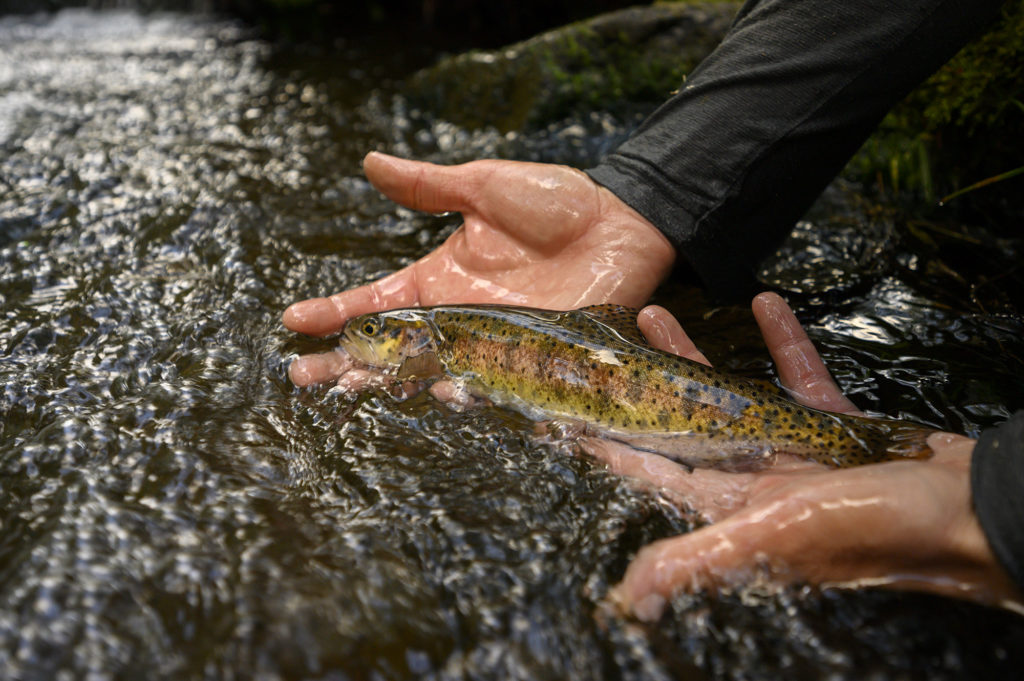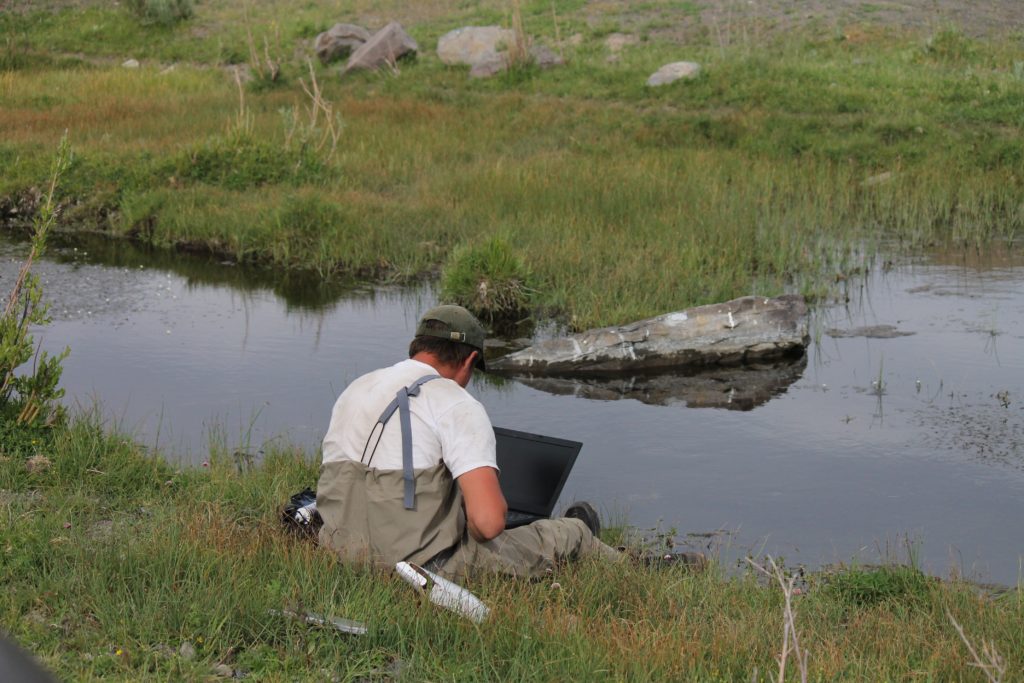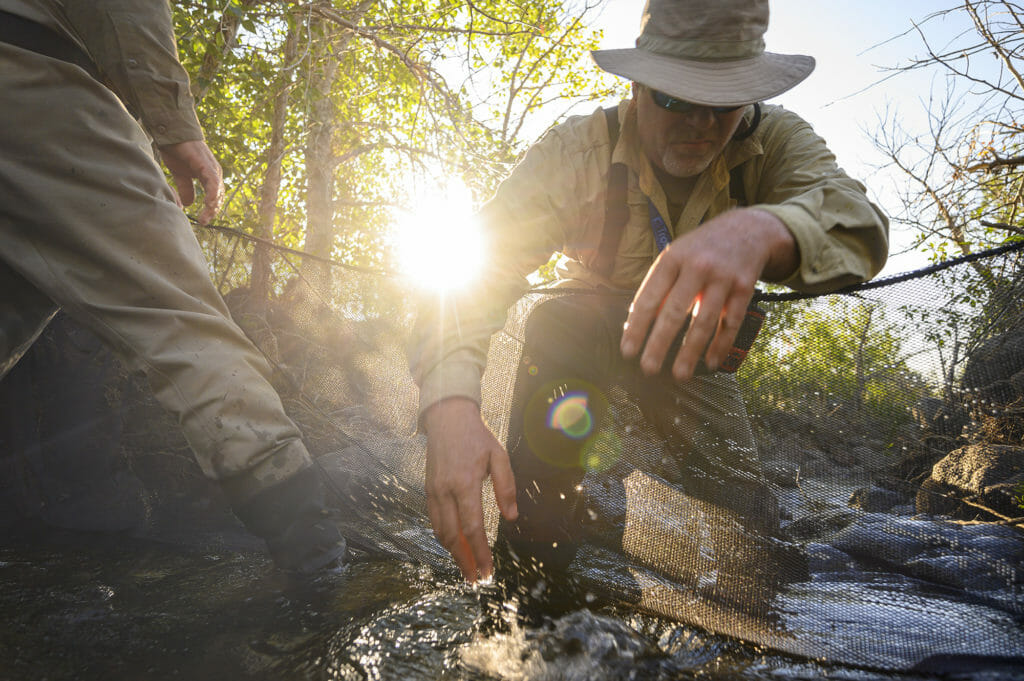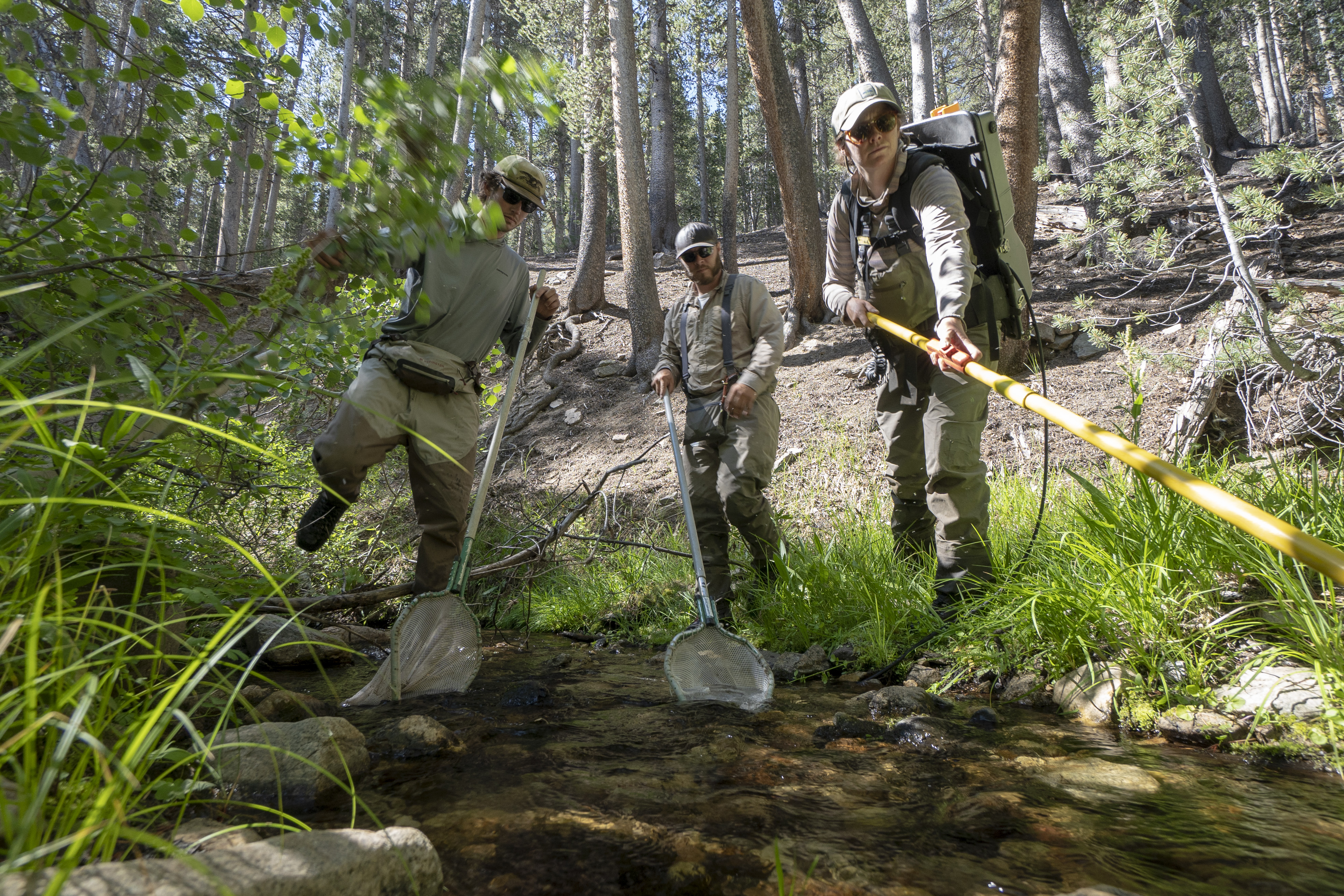Researchers work to gather data on Lahontan cutthroat trout.
Jason Barnes/Trout Unlimited
Determining the conservation needs of at-risk wildlife species is complicated business.
Federal and state wildlife agencies—and their partners — need to assess the unique characteristics of different populations to understand the conservation needs of a given species.
They typically ask questions like:
“Which populations are most likely to persist?”
“Which would benefit most from management or restoration actions?”
“Where could we feasibly reintroduce this species?”
The gold-standard for addressing these needs is a modeling framework called Population Viability Analysis (or PVA), which lets biologists explore which factors most affect a population’s extinction risk over a given time-frame (say, 50 or 100 years). PVA has been around for decades and was an essential tool in evaluating threats and management needs for high-profile species like the grizzly bear and the spotted owl.
But it still remains inapproachable for many species, due largely to intensive data needs and the fact that each population requires a separate PVA. This means that, until very recently, PVA couldn’t readily be used for species that may be highly at-risk, but still persist in multiple locations across a landscape. This was certainly the case for the Lahontan cutthroat trout (LCT), which is listed under the Endangered Species Act and exists in small, isolated, and remote headwater streams across the northern Great Basin Desert.

Josh Duplechian/Trout Unlimited
Five years ago, Trout Unlimited scientists and collaborators from the Universities of Georgia, Montana and Nevada, and U.S. Geological Survey and the Forest Service, received a grant from NASA to build an entirely new approach to PVA and solve these problems. Additional funding for the work came from Trout Unlimited, Bureau of Land Management, Fish and Wildlife Service and National Fish and Wildlife Foundation.
We pitched a project to build a novel PVA framework that models multiple populations at once (called Multiple Population Viability Analysis, or MPVA) and builds on our expertise using information from remote sensing (satellite) tools to evaluate fish habitat. Because the model estimates abundance and population dynamics across all populations simultaneously, it can draw on information from more data-rich populations to make inferences for data-poor populations. That attribute alone means quantitative PVA is now within reach for many more species of conservation concern than ever before.
The model isn’t just a trout model. It can be used on any species with multiple isolated populations, but we focused on Lahontan cutthroat trout as a fishy poster child in need of this approach. Over the last several years we worked with partners to pull together all available data for the species and help identify priority management questions to evaluate. We published this new class of models in 2017 and 2018 in the journals Biological Conservation and Ecology.

Jason Barnes/Trout Unlimited
This month, our final paper applying the models to Lahontan cutthroat trout conservation needs was published in the international journal Conservation Biology. In addition to the above partners, this paper was coauthored with the Chief of Fisheries from the Nevada Department of Wildlife and Nevada’s Assistant Field Supervisor for the U.S. Fish and Wildlife Service. In this application paper we evaluated all Lahontan cutthroat trout populations, looking at both “conservation populations” (agency-identified populations managed for recovery) and other Lahontan occupied waters.
We also evaluated the benefit of removing non-native trout, a major threat to all native cutthroat trout, and modeled unoccupied historical waters where the likelihood of reintroduction success could be evaluated.
In one fell swoop, MPVA provided quantitative estimates of extinction risk across 84 Lahontan cutthroat populations based on all available data from 1985 to 2016. Our results confirmed that agency-designated conservation populations tended to have lower extinction probabilities than other populations (with a mean extinction risk of 19.8 percent versus 52.7 percent), meaning this designation is a valid characterization of relative recovery potential.
This wasn’t always the case. We found six conservation populations currently prioritized for recovery planning have a 70 percent or greater probability of extinction by 2045, and 11 more are at or above 20 percent risk of extinction. On the flip side, our models predicted relatively low (<10%) extinction risk for several non-conservation populations. For these cases, which would not have been identified without MPVA, agencies may want to consider re-prioritization of conservation status and management needs.

Josh Duplechian/Trout Unlimited
MPVA verified removing non-native trout is an effective management action, which was not at all surprising – but because the effect wasn’t the same for every population, it provided useful information about which populations would benefit most from these efforts. Similarly, reintroduction success differed across populations, so our results can point agencies to the most productive waters to consider for establishing new populations.
A major goal of all this work was not only to develop this new science but to make the information accessible to management and other partners. To do that, we built a web-based tool where a user can explore the results of our models and do their own simulations to evaluate the impact of different management actions. For instance, a user could remove non-native trout from a given water and instantly evaluate the effect on the population’s extinction probability or evaluate how likely it is that that a population will persist if Lahontan cutthroatt are reintroduced to a specific stream of interest.
This has been one of the most satisfying projects I’ve ever worked on (and I think I can speak for all the Trout Unlimited scientists involved in this project). We had the pleasure of working in a broad academic/agency/NGO collaboration to develop cutting-edge science and address a serious limitation for conservation, while working with management partners to ensure the information we generate is useful for prioritizing needs for a threatened trout. To me, that’s another kind of gold-standard.
Helen Neville is Trout Unlimited’s Senior Scientist.



